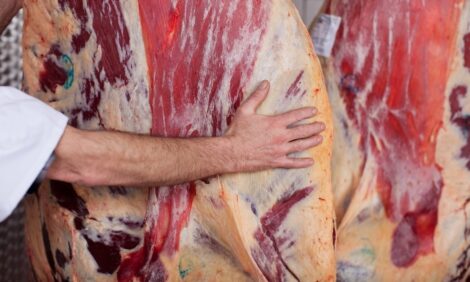



Minister Launches Red Meat Processing Sector Environmental Guidelines
AUSTRALIA - The red meat processing industry has achieved a major milestone in environmental management through the official launch today of its Environmental Best Practice Guidelines by Federal Agriculture, Fisheries and Forestry Minister Peter McGauran.
With off-farm beef, and sheepmeat products being worth in excess of $15.6 billion annually, the red meat processing industry is one of Australia’s largest rural value-adding industries and operates various-sized processing facilities across the nation.
The new guidelines are endorsed by the peak industry body Australian Meat Industry Council (AMIC) as well as Meat and Livestock Australia (MLA), the Australian Meat Processor Corporation (AMPC) and the Department of Agriculture, Fisheries and Forestry (DAFF).
The guidelines are a set of six independent but related modules which define current environmental best-practice for meat processors and address issues covering odour and air quality, wastewater treatment and its irrigation to land, waste solids and energy management.
Mr McGauran congratulated the industry for creating the guidelines and investing in modern technologies, practices and staff training to protect the environment and promote the responsible and efficient use of resources.
“The guidelines are a clear statement of environmental best practice in the Australian red meat industry and will help to place the industry on an environmentally sustainable footing,” Mr McGauran said.
Meat and Livestock Australia spokesperson Dr Christine Pitt said the guidelines are not prescriptive but instead take account of differences in processing scale and context across the Australian red meat processing industry.
“Red meat processing plants are faced with ever-increasing environmental pressures such as stricter wastewater quality requirements, tighter environmental emission regulations and higher community expectations,” Dr Pitt said.
“That’s why these guidelines take account of differences in scale, type and geographical location of meat processors. They allow for the many variables in industry operations and do not override state or Commonwealth environmental regulations,” she said.
Australian Meat Industry Council technical manager Conrad Blaney said: “Through businesses adopting the guidelines, industry demonstrates a voluntary commitment to operating at a high standard of environmental practice and shows the community it is protecting the Australian environment and being accountable for overall performance.”
Australia Meat Holdings’ general manager corporate affairs John Berry said: “During the past three years, the adoption of environmental best practice has achieved direct water savings of about 600 million litres – the equivalent of 450 Olympic size swimming pools – at the company’s Dinmore plant, which is the nation’s largest meat processing facility.”
“The water efficiency savings achieved by AMH provide an international benchmark for the industry and importantly a basis for the sustainability of our business,” Mr Berry said.
TheCattleSite News Desk


